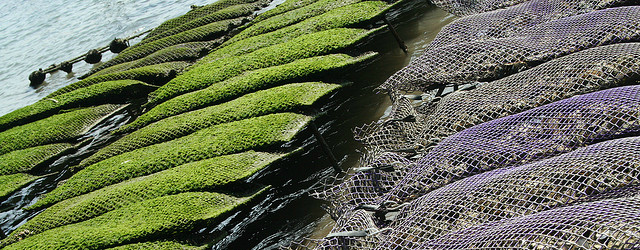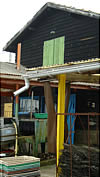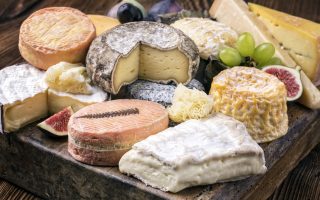Oyster Farmers in France
Feature

By Gemma Driver
A few Arcachon Oyster Facts:
- Oysters have been enjoyed by the French since the Roman occupation, if not much earlier.
- Oyster parks were introduced in France by Napoleon 3rd, because the gathering of wild oysters was wiping the species out. The first farm began production in the Arcachon area, in 1849.
- Most oysters that you see for sale are the large Pacific oysters. The native ‘English’ oysters are rounder and flatter, but their slow growth rate makes them more expensive.
- There are 350 oyster farmers in the Arcachon Basin. They produce 8 – 10,000 tonnes of oysters a year – not many compared to the 35,000 tonnes from Brittany; Arcachon is limited in the number of producers it can support, because it is an enclosed bay.
- However, 60% of oysters that are eaten in France come from Arcachon, although generally they are not bought from supermarkets, because the producers aren’t large-scale enough to supply them.Oyster CultureDuring the autumn in France, road side stalls start setting up, ready for their winter-long trading season. They sell oysters, and nothing but oysters (well, maybe the odd mussel or cockle). I was chuffed to discover this phenomenon, after moving here. Whether you like oysters or not, this is a fantastically rich cultural asset, and it is surprising that it is not more famous abroad – but that’s the kind of discovery which makes moving to France so exciting.
It is no wonder that Brits seem skeptical of oysters, when they have to pay a high price at the supermarket for a single specimen of dubious aliveness. Added to which are the horror stories of people getting an upset tummy from consuming oysters in a restaurant.
In France, though, everyone knows that you are extremely unlikely to become ill from a fresh, living oyster that comes from the clean sea, unless you have an allergy to seafood. The French have also grown up with oysters being very accessible, at around 7 to 8 euros a dozen, and boxes of them piled high in supermarkets, fish mongers and the roadside stalls during winter.
A Closer Look…
It does seem that people either adore or despise oysters. It may come as no surprise that I can’t get enough of these divine jewels, these ethereal embodiments of the pure sea. As a result, I wanted to find out exactly how they are commercially produced, so I visited an oyster farmer at Gujan-Mestras, on the Arcachon Basin.
 Thomas Fressaix arranged the visit. He is the Director of the Mission Qualité at the Section Régionale Conchylicole Arcachon Aquitaine. We drove down a track on a thin finger of land, which stretched out into the bay. On one side were concrete storage tanks for oysters, and on the other was a line of wooden shed-like buildings, each with it’s shutters painted a different bright colour, and each one belonging to a different ostréiculteur (oyster farmer). On the other side of the buildings there was a small estuary and the oyster boats. We pulled up outside one of the sheds, and Thomas ushered me inside.
Thomas Fressaix arranged the visit. He is the Director of the Mission Qualité at the Section Régionale Conchylicole Arcachon Aquitaine. We drove down a track on a thin finger of land, which stretched out into the bay. On one side were concrete storage tanks for oysters, and on the other was a line of wooden shed-like buildings, each with it’s shutters painted a different bright colour, and each one belonging to a different ostréiculteur (oyster farmer). On the other side of the buildings there was a small estuary and the oyster boats. We pulled up outside one of the sheds, and Thomas ushered me inside.I was introduced to Sébastien Condom, 28 (yes, it does mean the same in French). Sebastian has had his own oyster business since 2004, but has worked in the industry for 17 years. His father was an ostréiculteur, so Sebastian has been learning his trade and eating oysters since he was tiny. I asked him to explain the process of oyster production.
How Oysters Grow

Oyster boats
When oyster larvae are born, they float about in the sea, looking for a rough surface to hold onto. Every July, the oyster farmers submerge terracotta tiles painted with lime, or plastic replica tiles, and wait for the larvae to cling to them. This is the same practice that has been employed since 1904, and means that all the oysters from Arcachon start off wild. Once the oysters are big enough, and the smallest, weakest oyster spat have fallen off the tiles (and probably been eaten by crabs and prawns), the ostréiculteur scrapes the survivors off, and puts them into what look like a rope-mesh pillow cases, which, as Thomas explained, need to be pretty roomy; “Oysters are like any animals – if you have too many cows in a small field, they will not have enough grass. Oysters will not be able to eat enough in a cramped space, and may become stunted or deformed. We must ensure that oysters have the best possible conditions.”

Grading oysters:
Sébastien (left) and his business partner StéphaneThe cases are taken to the oyster beds, four to five kilometres out in the Basin, stacked in racks, and left for over two years, while the oysters grow. The oysters are around three years old by the time they are eaten. Other areas can grow oysters more quickly, and sell them after two years. This is because oysters only eat their diet of plant plankton when submerged, and those in the Arcachon Basin are subject to significant tidal variations.When the oysters are ready to be sold, they are graded and put into the oxygenated storage tanks, until the van comes to collect them. In the run up to Christmas, when ostréiculteurs do the bulk of their trade, oysters are graded and then taken back out to sea for storage, so that they are in the best conditions possible while they await the seasonal rush. Sébastien’s business produces around 40 tonnes of oysters a year, 25 of which are sold during the festive season. The majority of French oyster-eaters only have them at Christmas time.Pollution
Sébastien was grateful that he started his business after the 2003 oil spillage, off the north coast of Spain, which temporarily slowed French oyster sales. I asked him how much EU regulations affect his work, but he said that they barely have an impact, except on conditions in the grading and packaging room. Oysters simply won’t grow in polluted water, which is why they no longer grow further north, towards Bordeaux. Oyster farmers never feed or give medication to their livestock, and storage conditions are hardly an issue, because the oysters are sold on almost as soon as they leave the sea. The farmers’ main job seems to be to keep the oysters as happy as possible.
Oyster Tasting Notes
 Each oyster has it’s own individual flavour, and I was keen to find out whether their taste varies depending on where they are produced. Thomas told me there are currently studies being done on the subject, which are also looking at variations in the all-important smell and texture of oysters. Variations occur due to differing tidal and climactic conditions, water salinity and the quantities and species of plankton. Fans of the Arcachon oyster maintain that it has a much more refined and delicate taste and texture than the faster-growing Normandy oyster. Then there are the strong, salty Mediterranean oysters, which are an acquired taste. But even within the Arcachon Basin, flavours and aromas vary from ‘forest-like’ notes of mushroom, which can be detected in oysters that grow near to the mouth of the river La Leyre, to fruit, vegetable and citrus notes in oysters that have come from further out in the bay. When I asked Sébastien whether he still eats oysters, he said “Of course – everyday!”. And his favourite recipe? “nature”.
Each oyster has it’s own individual flavour, and I was keen to find out whether their taste varies depending on where they are produced. Thomas told me there are currently studies being done on the subject, which are also looking at variations in the all-important smell and texture of oysters. Variations occur due to differing tidal and climactic conditions, water salinity and the quantities and species of plankton. Fans of the Arcachon oyster maintain that it has a much more refined and delicate taste and texture than the faster-growing Normandy oyster. Then there are the strong, salty Mediterranean oysters, which are an acquired taste. But even within the Arcachon Basin, flavours and aromas vary from ‘forest-like’ notes of mushroom, which can be detected in oysters that grow near to the mouth of the river La Leyre, to fruit, vegetable and citrus notes in oysters that have come from further out in the bay. When I asked Sébastien whether he still eats oysters, he said “Of course – everyday!”. And his favourite recipe? “nature”.•With thanks to Stéphane Bontemps and Sébastien Condom of GAEC du Banc d’Arguin. rue Armand Daney, Gujan-Mestras, tel +33 (0)5 56 66 05 36 71
Share to: Facebook Twitter LinkedIn Email
More in aquitaine, boat, businesses, fishing, land, learning, work
By Gemma Driver
Leave a reply
Your email address will not be published. Required fields are marked *



